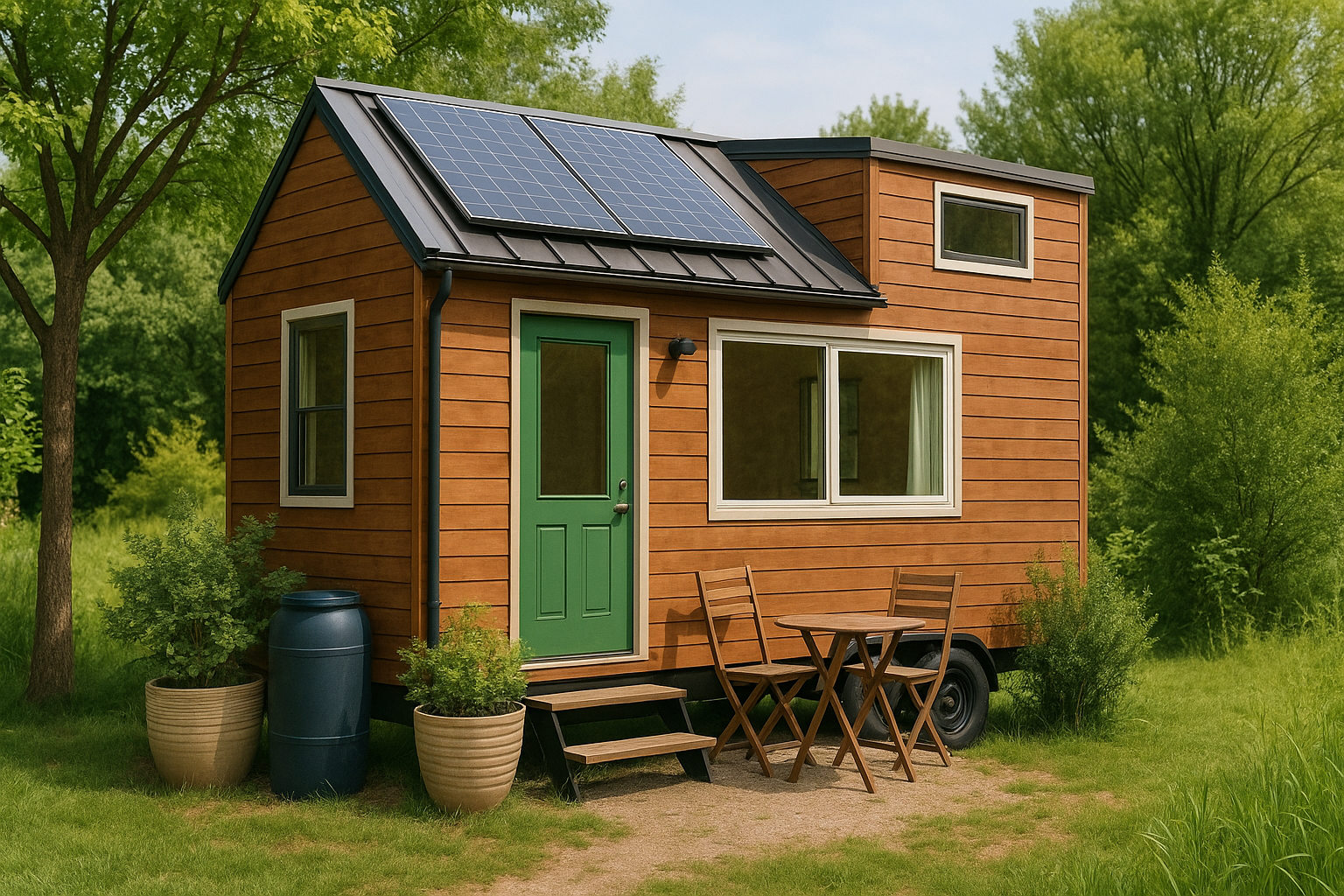
Estimated reading time: 10 minutes
Key Takeaways
- Tiny sustainable living offers a compact yet innovative approach to eco-conscious living.
- Eco-friendly homes merge modern comfort with green building practices.
- Energy-efficient design coupled with smart technology minimizes environmental impact.
- This movement supports resilient, affordable, and sustainable housing solutions in Canada.
Table of contents
- Understanding Tiny Sustainable Living
- Key Principles of Sustainable Housing in Tiny Homes
- Energy-Efficient Design Strategies
- Smart Homes and Innovative Technology for Sustainability
- Practical Tips for Building or Buying a Tiny Sustainable Home
- Broader Impacts and Future Trends
- Conclusion: The Case for Tiny Sustainable Living
- Frequently Asked Questions
Understanding Tiny Sustainable Living
Tiny sustainable living means adopting a simpler, environmentally responsible lifestyle in a compact home—usually under 500 square feet. This approach minimizes energy usage, resource consumption, and waste production while encouraging minimalism and ecological awareness.
What is Tiny Sustainable Living?
- Compact homes: Typically no larger than 500 sq. ft.
- Resource-efficient: Built using minimal water, energy, and materials.
- Minimal lifestyle: Encourages mindful consumption by owning fewer, more meaningful belongings.
- Energy-saving focus: Reduces both operational and embodied energy demands.
Why Choose Tiny Sustainable Living?
- Lower Energy & Water Usage: Small spaces heat and cool quickly, reducing overall consumption.
- Reduced Carbon Footprint: Fewer building materials decrease construction-related pollution.
- Mindful Consumption: Promotes recycling and a circular economy by limiting waste.
- Accessible Eco-Living: Offers a viable option for affordable sustainable housing.
This movement blends sustainable housing concepts with eco-friendly homes, paving the way for a greener future.
Key Principles of Sustainable Housing in Tiny Homes
Tiny homes focus on sustainable materials, eco-friendly construction, and climate resilience—all central to reducing their environmental impact.
Sustainable Materials and Construction
- Recycled and reclaimed materials: Use salvaged metal, reclaimed timbers, and reused fixtures to conserve resources.
- Renewable resources: Materials like bamboo and cork flooring provide eco-friendly alternatives.
- Low-VOC finishes: Safer, cleaner paints reduce indoor air pollution.
- Energy-efficient windows and insulation: High-performance products help maintain comfortable temperatures with less energy.
Green Building Certifications and Standards
- Conforms to strict energy efficiency benchmarks and indoor air quality criteria.
- Incorporates resource management strategies with water-saving fixtures.
Climate Resilience in Tiny Homes
- Weather-resistant exteriors: Durable siding and roofing withstand severe weather.
- Elevated foundations: Designed to prevent flooding and structural damage.
- Advanced insulation: Ensures comfort during extreme temperatures.
Energy-Efficient Design Strategies
Efficient design is at the core of tiny sustainable living—each square inch is optimized for energy savings and comfort.
Core Strategies
- High-Performance Insulation: Keeps interiors warm in winter and cool in summer.
- Natural Lighting and Ventilation: Strategic window placement and skylights reduce reliance on artificial lighting.
- Smart Space Utilization: Multifunctional furniture maximizes usability.
- Renewable Energy Integration: Solar panels and wind turbines support off-grid capabilities.
Smart Homes and Innovative Technology for Sustainability
Modern technology transforms tiny sustainable homes into hubs of efficiency and convenience.
Smart Home Innovations
- Smart thermostats: Automatically adjust temperatures based on occupancy and patterns.
- Automated lighting: Occupancy sensors and timers reduce wasted energy.
- Remote monitoring: Manage home systems via smartphones for real-time control.
Water Conservation and Waste Management
- Rainwater harvesting: Capture and store runoff for irrigation and non-potable uses.
- Low-flow fixtures: Cut water consumption without compromising performance.
- Composting toilets and greywater recycling: Innovative systems reduce waste and promote resource reuse.
These smart solutions complement the principles of energy-efficient design in modern sustainable living.
Practical Tips for Building or Buying a Tiny Sustainable Home
- Select Sustainable Materials: Opt for local, recycled, or renewable resources such as bamboo or strawboard.
- Ensure Airtight Design: Prioritize high R-value insulation and precise construction to maximize energy efficiency.
- Plan for Climate Resilience: Use moisture-resistant materials and reinforced structures to withstand local weather extremes.
- Consider Zoning & Certification: Research local regulations and seek green building certifications for added assurance.
This informed approach balances comfort, affordability, and environmental impact in the pursuit of sustainable living.
Broader Impacts and Future Trends
- Affordable Eco-Friendly Housing: Tiny homes offer economical alternatives amid rising housing costs.
- Innovative Green Building: Advances in modular construction and sustainable materials continue to enhance efficiency.
- Smart Technology Integration: Evolving automation and sensor technologies drive further energy savings.
- Urban Planning Evolution: Increased support for flexible zoning and sustainable communities paves the way for widespread adoption.
Conclusion: The Case for Tiny Sustainable Living
Tiny sustainable living brings together sustainable materials, energy-efficient design, and smart technology to redefine modern eco-friendly housing. It offers a compelling model for reducing environmental impact while ensuring affordability and resilience.
Key points include:
- Innovative construction techniques minimize resource waste.
- Efficient design lowers energy bills and enhances comfort.
- Climate resilience prepares homes to withstand extreme weather.
- Future-focused innovations promise even greater sustainability benefits.
By embracing tiny sustainable living, Canadians can build smarter, greener communities—one home at a time.
Frequently Asked Questions
What defines a tiny sustainable home?
A tiny sustainable home is generally under 500 square feet and designed with energy efficiency, smart technology, and eco-friendly materials to reduce its environmental footprint.
How do tiny homes help reduce a carbon footprint?
They use fewer resources for construction and rely on energy-efficient systems, renewable energy sources, and innovative design to lower both operational and embodied carbon emissions.
Are tiny sustainable homes viable in harsh climates?
Yes, with proper insulation, weather-resistant exteriors, and climate resilience strategies, tiny homes are built to perform well even in extreme weather conditions.
Which smart technologies are most beneficial in these homes?
Smart thermostats, automated lighting, and remote monitoring systems are widely used to optimize energy consumption and enhance the comfort and sustainability of tiny homes.

Leave a Reply to Building An Eco-Friendly Home: Practical Canadian Strategies For Sustainable And Cost-Effective Living – ADU Start Cancel reply